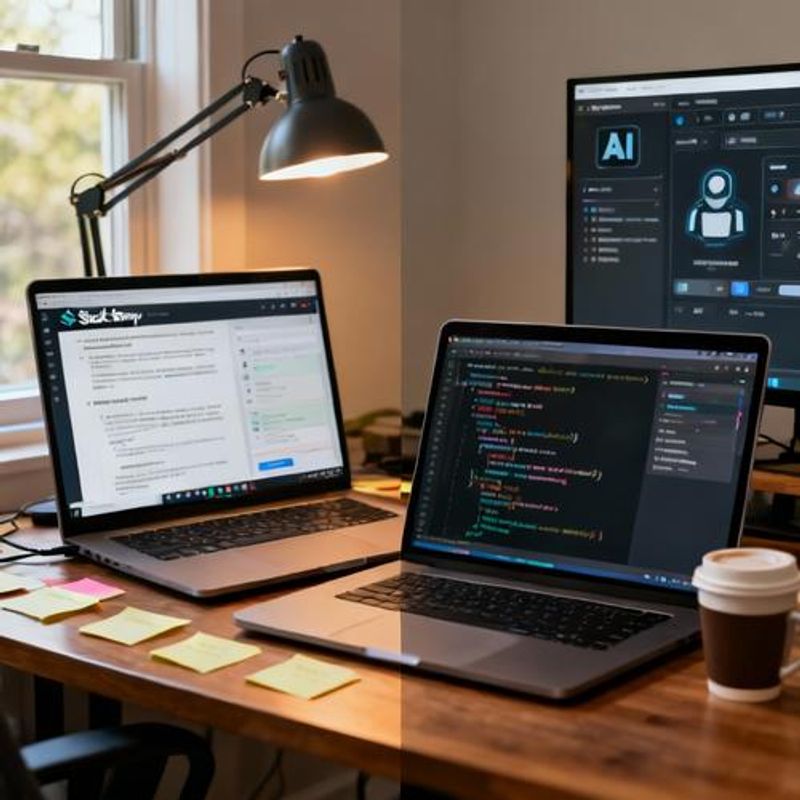How to Enable AI in Your Development Workflow: A Complete Guide for Programmers

As a programmer, you're likely spending countless hours on repetitive tasks, debugging, and writing boilerplate code. What if you could enable AI to handle 40-60% of these mundane tasks while you focus on solving complex problems and building innovative features? This comprehensive guide will show you exactly how to integrate AI tools into your development workflow, from code generation to automated testing, transforming how you write software forever.

Why AI Integration is Critical for Modern Developers
The development landscape has evolved dramatically. Companies are shipping faster, requirements change constantly, and technical debt accumulates quickly. Traditional development approaches leave programmers drowning in routine tasks: writing unit tests, generating documentation, fixing syntax errors, and searching through codebases for similar implementations. Research shows developers spend only 30% of their time writing actual business logic, with the rest consumed by these overhead activities. AI tools can reclaim this lost productivity, but only when implemented strategically within your existing workflow.
Quick Wins: Essential AI Tools Every Programmer Should Enable
Before diving deep, here are the immediate AI integrations that will transform your daily coding experience:
- GitHub Copilot or Cursor for intelligent code completion and generation
- AI-powered debugging tools like Sourcegraph Cody for codebase understanding
- Automated testing generation with tools like Testim or Mabl
- Code review automation using DeepCode or SonarQube's AI features
- Documentation generation through GPT-powered plugins in your IDE

Step-by-Step: Setting Up Your AI-Enhanced Development Environment
Enabling AI in your development workflow requires a systematic approach. Start with your IDE—the heart of your coding environment. Install GitHub Copilot or similar AI coding assistants and configure them for your primary languages. Next, integrate AI-powered terminal tools like GitHub CLI with AI features for repository management. Set up automated code analysis tools that can suggest refactoring opportunities and identify potential bugs before they reach production. Configure your CI/CD pipeline to include AI-powered testing and security scanning. Finally, establish AI-assisted documentation workflows that automatically generate and update technical documentation as your code evolves.
Real-World Implementation Examples
Consider a typical React component development scenario. Instead of manually writing PropTypes, useState hooks, and basic event handlers, AI can generate the entire boilerplate from a simple comment describing the component's purpose. For backend development, AI can create database schemas, API endpoints, and corresponding tests from natural language specifications. When debugging, AI tools can analyze stack traces and suggest specific fixes based on similar issues in your codebase or public repositories. For legacy code maintenance, AI can explain complex functions, suggest modernization strategies, and even perform automated refactoring while preserving functionality.

Common Pitfalls and How to Avoid Them
The biggest mistake programmers make when adopting AI tools is over-reliance without understanding the generated code. Always review and test AI-generated code thoroughly—treat it as suggestions from a junior developer rather than authoritative solutions. Avoid using AI for critical security implementations without additional verification. Don't let AI tools make you lazy about learning fundamental programming concepts; they should enhance your skills, not replace them. Be cautious about AI-generated code that handles sensitive data or implements complex business logic without proper validation. Finally, resist the temptation to accept every AI suggestion; maintain your coding standards and architectural principles.
Next Steps: Mastering AI-Powered Development
Ready to transform your development workflow? Start by implementing one AI tool this week—we recommend beginning with GitHub Copilot for immediate productivity gains. Track your time savings and gradually expand to other AI-powered tools as you become comfortable with AI-assisted development. Join communities like the AI for Developers Discord or follow AI coding tool updates on GitHub to stay current with emerging capabilities. Remember, the goal isn't to replace your programming skills but to amplify them, allowing you to focus on creative problem-solving and innovation rather than repetitive coding tasks.